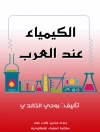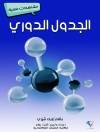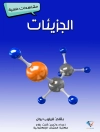Historically, natural products have great relevance for the development of new drugs. Natural molecules, in addition to directly providing new compounds with different therapeutic functions have provided scaffolds and a great diversity of structures that serve as inspiration for the design and discovery of new drugs. The great structural complexity and the significant number of natural compounds that can be obtained and their advantages also present some historical problems that need to be overcome. Issues such as difficulty in isolation, difficulty in synthesizing compounds found in nature in the laboratory, screening to evaluate the biological properties of these compounds, and structural optimization to enhance the pharmacological properties of biomolecules; are some of the main difficulties encountered in research with natural products and in the design/discovery of new medicines. Therefore, this book addresses the great scientific advances that provide practical solutions to usingnatural products to develop new drugs. We address topics related to the genesis of research projects that use natural products to design new drugs. We address the discovery of new species, initial processes for identification and extraction of compounds, isolation and identification of these structures, techniques, and advances in vitro and in vivo methods that support the discovery of new natural drugs, synthesis of new compounds from natural molecules, in silico optimization processes of potentially promising compounds.
Зміст
Section 1: Genesis of research projects that use natural products to design new drugs.- Chapter title : Drug development projects guided by ethnobotany and ethnopharmacology studies.- Chapter content : In this chapter, the authors will be encouraged to demonstrate how traditional knowledge of local populations can provide vital information for developing projects that seek to validate the pharmacological use of plants scientifically.- Correspondence author : Neelam S Sangwan, School of Interdisciplinary and Applied Sciences, Central University of Haryana, Haryana, India, Email: [email protected] Section 2: Initial processes for identifying and extracting compounds; Isolation and identifying these structures.- Chapter title : Natural Deep Eutectic Solvents (NADES) for Extraction and Isolation of Biological Active Natural Products.- Chapter content : The choice and use of solvents are crucial steps in extracting and dissolving natural or synthetic organic compounds. Many of these organic solvents are carcinogenic and harmful to human health. Therefore, there is great interest in studies to develop new green solvents to replace traditionally used solvents. These green solvents have the general characteristics of not being harmful to the environment and having good health and safety. At the forefront of green solvents, natural deep eutectic solvents (NADES) deserve to be highlighted. Nades are products of the interactions of organic acids and sugars through hydrogen bonds and van der Waals-type interactions, offering advantages such as low toxicity, biodegradability, sustainability, and simple preparation. This chapter will address the use of these compounds for extraction and isolation projects of natural products.- Correspondence author : Christophe Hano, Eure et Loir Campus, Université d’Orléans, Chartres, France, Email: [email protected] Chapter title : Secondary metabolites from marine microalgae and their potential for drug development.- Chapter content: There is a great diversity of organisms living in an aquatic environment or fully immersed in it. These microorganisms have a great potential for the production of biomolecules, as well as organisms of plant origin. These marine organisms produce various compounds through their secondary metabolism to protect or attack aggressors and prey. The chemical nature of these compounds is very diverse, and they can be explored as potential molecules for therapeutic use. This chapter will address this topic to provide readers with an overview of drug development based on secondary metabolites of marine microalgae.- Correspondence author : Giovanna Romano, Section Integrated Marine Ecology, Stazione Zoologica Anton Dohrn, Napoli, Italy, Email: [email protected] Chapter title : Chromatographic methods for separationand identification of bioactive compounds.- Chapter content: Chromatographic methods have been used for qualitative and quantitative analysis of plant materials in extracts, essential oils, fixed oils, and isolated molecules. These methods have been of great support for projects investigating the biological properties of these processed plant materials, as they support the interpretation of the biological potential explored from understanding the presence of chemical structures in these processed plant materials. Here, the authors of the chapter will approach, but will not be restricted to, the report of advantages and disadvantages in the use of this equipment and applications of this equipment in research projects of new drugs and drug development.- Correspondence author : Renan Campos, Laboratory of Systematic Investigation in Biotechnology and Molecular Biodiversity, Federal University of Pará, Belém, Brazil, Email: [email protected] Chapter Title : Methods of Dereplication.- Correspondence author: Dereplication is a technique used to identify known molecules that have been reported in the literature; as compounds are already known, several of their biological properties have already been investigated and reported. Using this technique allows researchers to save time, as already known compounds will not be isolated and identified, thus allowing researchers more time to focus their energies on discovering a new bioactive compound. Therefore, this chapter’s central theme will be the use of dereplication techniques and their impact on advances in the frontier of knowledge about novel compounds of natural origin.- Correspondence author : Ignacio Perez-Victoria, Fundación MEDINA, Centro de Excelencia en Investigación de Medicamentos Innovadores en Andalucía, Parque Tecnológico de Ciencias de la Salud, Avda. del Conocimiento, Granada, Spain, Email: [email protected] Section 3: Screening of compounds using molecular modeling approaches; Optimization of natural compounds using in silico methods.- Chapter title : High-throughput virtual screening (HTVS) methods of compounds of natural origin.- Correspondence author : This method is widely used in initial drug discovery projects, being of great importance to investigating the ability of various compounds to interact with a molecular target. Here the authors will discuss ligand-based and structure-based methods for screening compounds.- Correspondence author: Jean-Yves Trosset, Bio-Information Research Laboratory: Numerical Biology & Chem-Informatics, Sup’Biotech Paris, França, Email: [email protected] Chapter title : In silico optimization processes of natural compounds; Chapter content : The chapter will generally address molecular modeling methodologies capable of modifying and/or evaluating molecularmodifications in natural compounds. Methods capable of investigating ligand-receptor interaction will also be discussed. Discussions about molecular docking methods, SAR, QSAR, molecular dynamics simulation, and free energy methods will be addressed but not restricted. Correspondence author : Cleydson Breno, Laboratory of Modeling and Computational Chemistry, Department of Biological and Health Sciences, Federal University of Amapá, Macapá, Brazil, Email: [email protected] Section 4: Synthesis of compounds of natural origin; Synthesis of new compounds from natural molecules.- Chapter title : Recent advances in the use of Diversity-oriented synthesis (DOS) based on libraries of natural compounds.- Chapter contents: Fragment-based drug discovery (FBDD) project can be aided by diversity-oriented synthesis. Therefore, in this chapter, the authors will be free to discuss DOS designs that use natural fragments or fragments close to natural structures because some scaffolds that serve as inspiration are structurally comparable to molecules of natural origin. Therefore, the authors will be free to discuss the contributions and the main aspects of projects related to FBDD and DOS.- Correspondence author: Francisco Ramon Sarabia Garcia, Department of Organic Chemistry, Faculty of Sciences, University of Malaga, Campus de Teatinos, Malaga, Spain, Email: [email protected] Chapter title : Eseential oil derived monoterpenes in drug development.- Chapter content : Plant organisms are a great source of bioactive compounds. These molecules are present in several plant organs and can be organized in the form of fixed and volatile compounds. Fixed compounds are extracted and can be isolated, while volatile compounds are obtained from essential oil. Terpenoids are volatile compounds in several plant species with broad economic and medicinal value. The properties of these compounds are investigated through biological evaluations of essential oil rich in monoterpenes; pharmacological investigations of isolated monoterpenes are also carried out. This chapter will discuss how monoterpene-rich essential oils are pharmacologically investigated and evaluate the therapeutic results of isolated monoterpenes.- Correspondence author: Varughese George, Amity Institute of Phytochemistry and Phytomedicine, Kerala, India, Email: [email protected] Section 5: Identification of molecular targets of natural molecules.- Chapter title : Trends topics on methods used to elucidate molecular targets of biomolecules.- Chapter content : After a compound has its biological property evaluated, the discovery of its molecular target becomes a vital point of the research project. This challenge needs to be faced with the use of techniques that are fast and economically viable for research groups. Thus, the primary methods capable of elucidating the molecular target of bioactive compounds will be reported here, as well as their advantages and disadvantages in drug discovery projects.- Correspondence author : Cibele dos Santos Borges, Department of Bioscience, Federal Rural University of Semi-Arid Region, Mossoró, Rio Grande do Norte, Brazil, Email: [email protected] Section 6: Successful new drug projects inspired by natural products.- Chapter title Molecular mechanisms of natural products regulating metabolism and health.- Chapter content : Many diseases are caused by disorders in our metabolisms, such as diabetes, obesity, and dyslipidemias. Some natural compounds can modulate the organism to improve the response to these disorders. These natural compounds, which can be flavonoids, and terpenoids, among others, have a variety of actions. In this chapter, the regulation of metabolic disorders will be addressed, in addition to investigating the function and potential mechanisms of action of certain natural products.- Correspondence author : Ivan Torre Villalvazo, Instituto Nacional de Ciencias Médicas y Nutrición Salvador Zubirán, Departamento de Fisiología de la Nutrición, Mexico, Email: [email protected] Chapter title : Patent process for natural compounds and their analogs.- Contents of the chapter : Patent processes for natural products are problematic, as the intellectual appropriation of something present in nature is an obstacle to government policies. Projects carried out by departments located in different countries are another major problem that industry and academic researchers face when patenting a natural compound. In the context of other issues related to the research of natural products, these political obstacles also led to a decrease in interest in the search for new drugs. However, in recent years political advances have been made to address these issues. This chapter will report an approach to patents, policy advances, and their real effect on new drug research.- Correspondence author : Cláudia Andréa Lima Cardoso, Department of Analytical Chemistry, Universidade Estadual de Mato Grosso do Sul, Dourados, Mato Grosso do Sul, Brazil, Email: [email protected]
Про автора
Jorddy Neves Cruz develops his research projects in Universidade Federal do Pará and Museu Paraense Emílio Goeldi. His research focuses on (1) Medicinal Chemistry, with a particular emphasis on natural products and drug discovery/ design; (2) Extraction and characterization of compounds of natural origin (isolated compounds, essential oils, and fixed oils); (3) molecular modeling approaches and (4) evaluation of biological activities and pharmacological potential of natural compounds.












